Abstract
The modification of inappropriate speech, a class of behaviors rather than a limited number of specific examples, is little known in the severely retarded. In this study, operant techniques were used to modify the strikingly bizarre and inappropriate speech of a severely retarded boy. The boy's appropriate verbal responses to questions about magazine pictures were reinforced with candy. When he responded inappropriately, the magazine was withdrawn, and social interaction was discontinued for a 10-sec timeout period. Negative responses were ignored, the next picture displayed, and the next question asked immediately. In 10 sessions, appropriate responses increased from 26% to 86% of all responses. A reversal of reinforcement was then introduced, in which inappropriate responses were reinforced, appropriate responses resulted in timeout, and negative responses were treated as before. This reduced the percentage of appropriate responses to 24%. Subsequent sessions of reinforcement for appropriate responses increased appropriate responses to 96% of all responses. At significant stages in the experiment, a measure of possible generalization was attempted. Although some generalization was recorded, it was minimal: some explanations are discussed.
Full text
PDF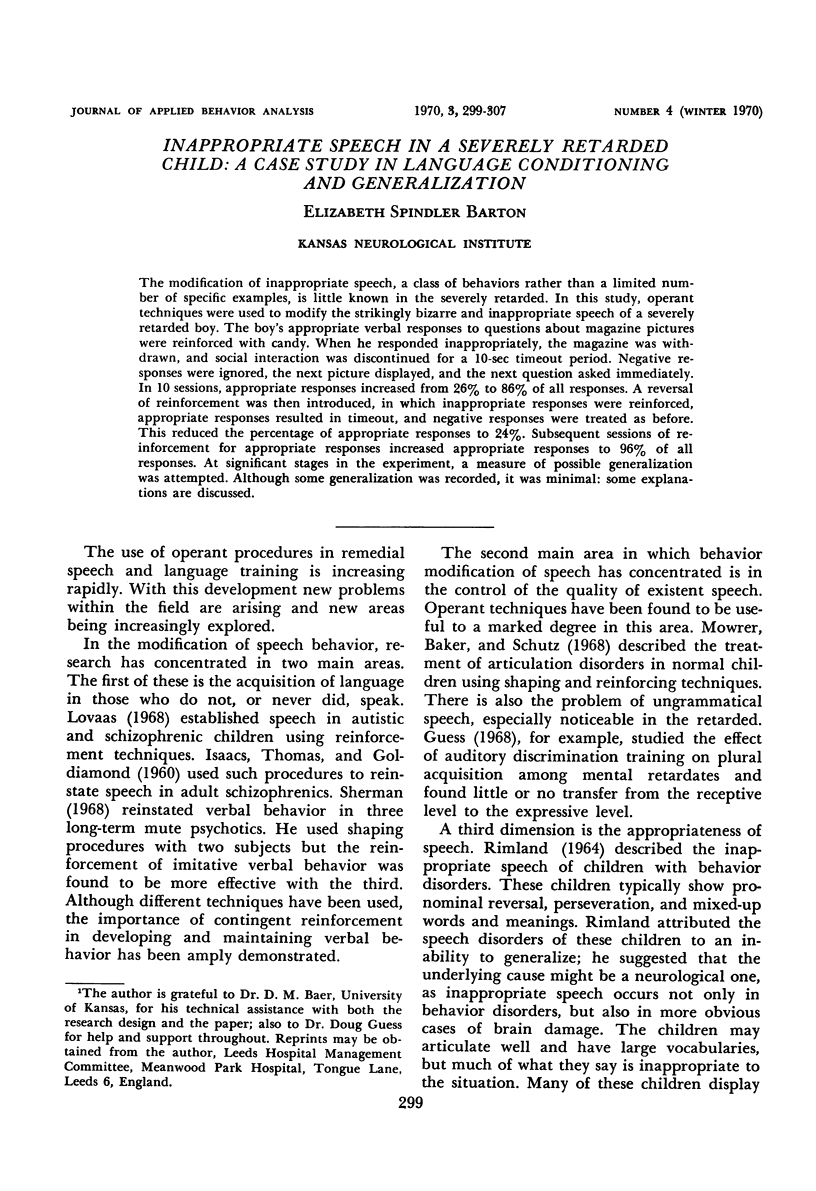
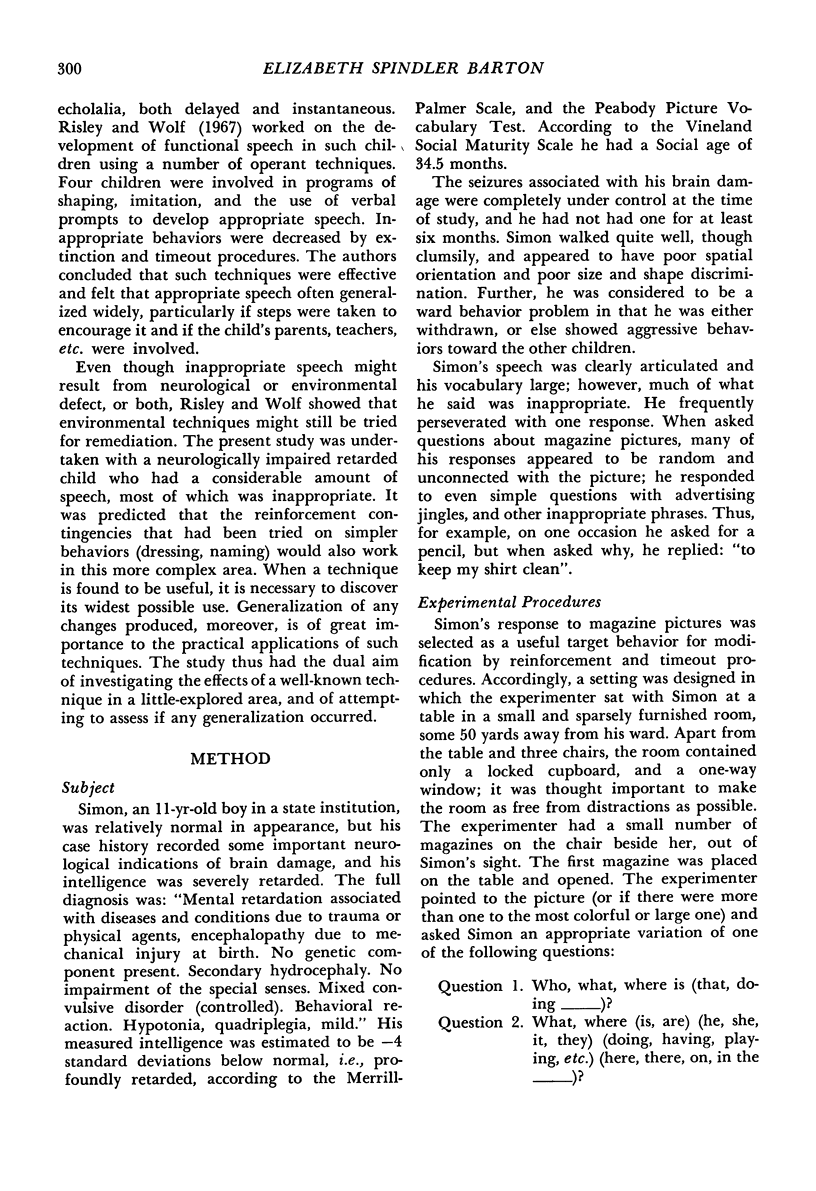
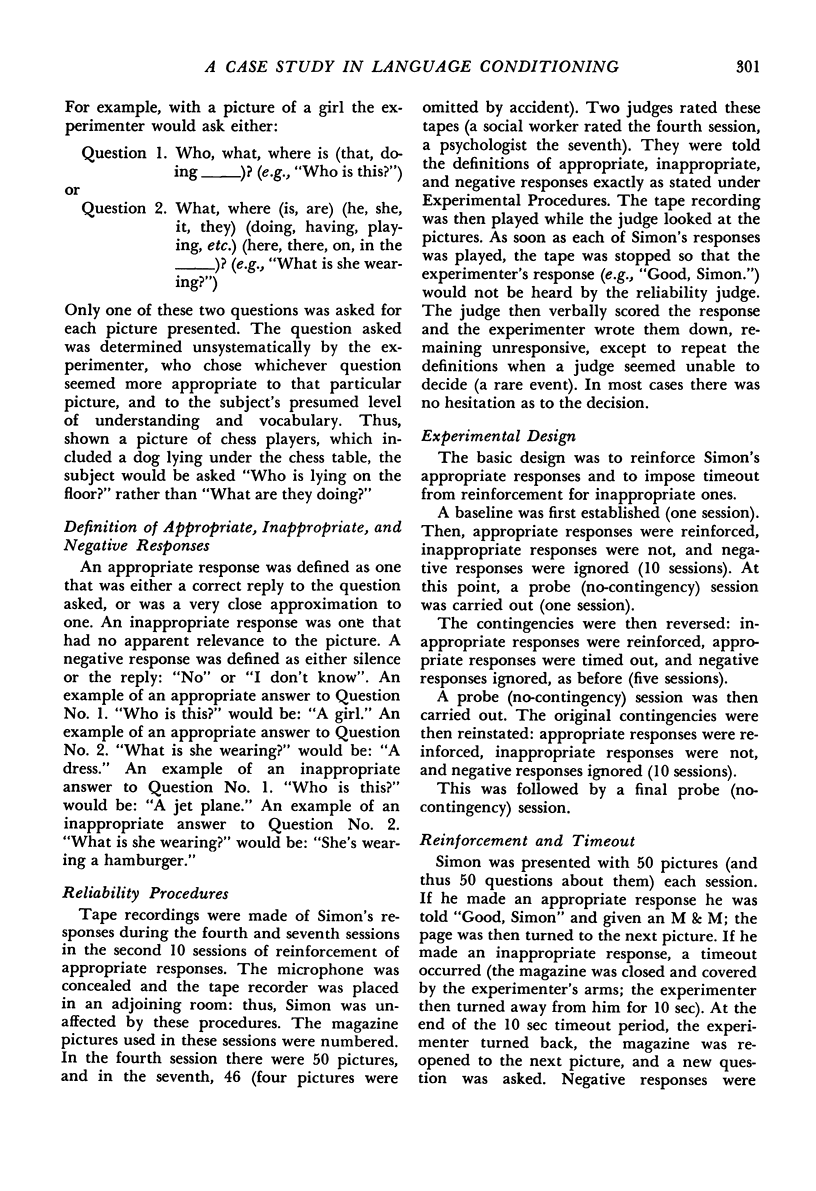
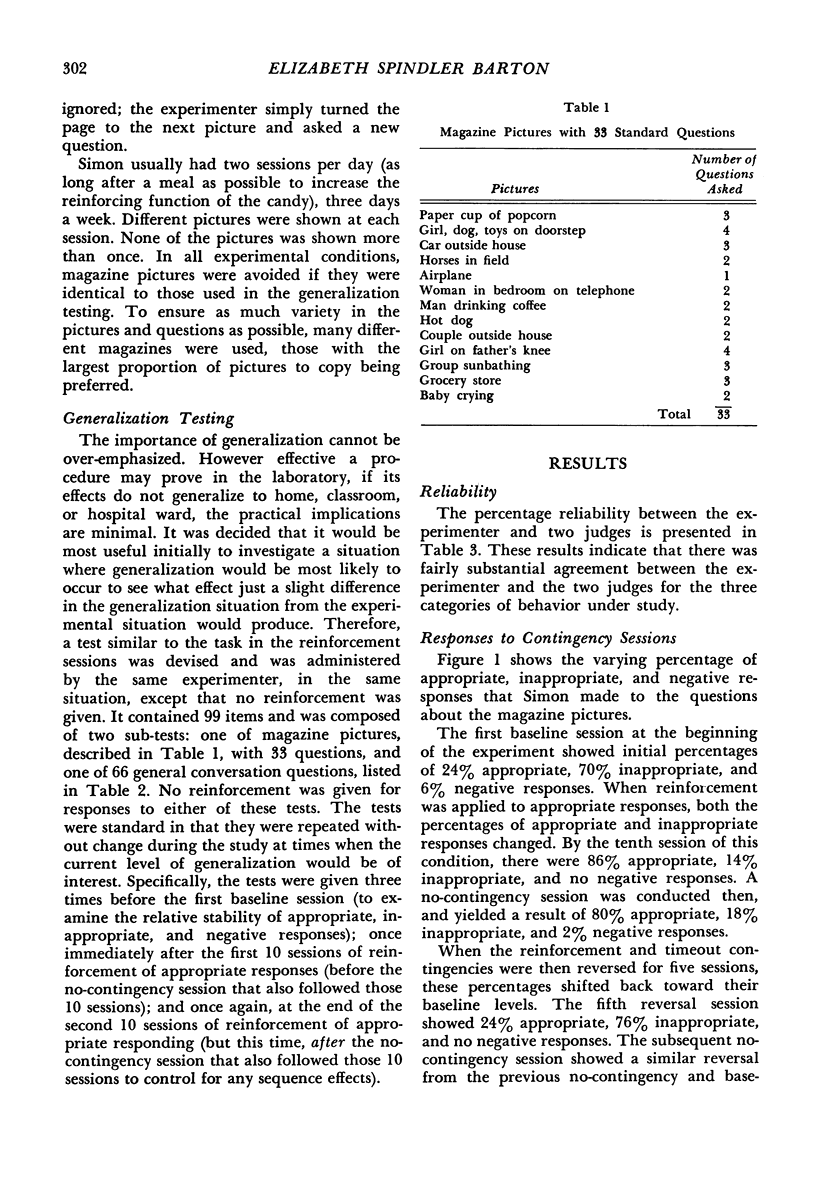
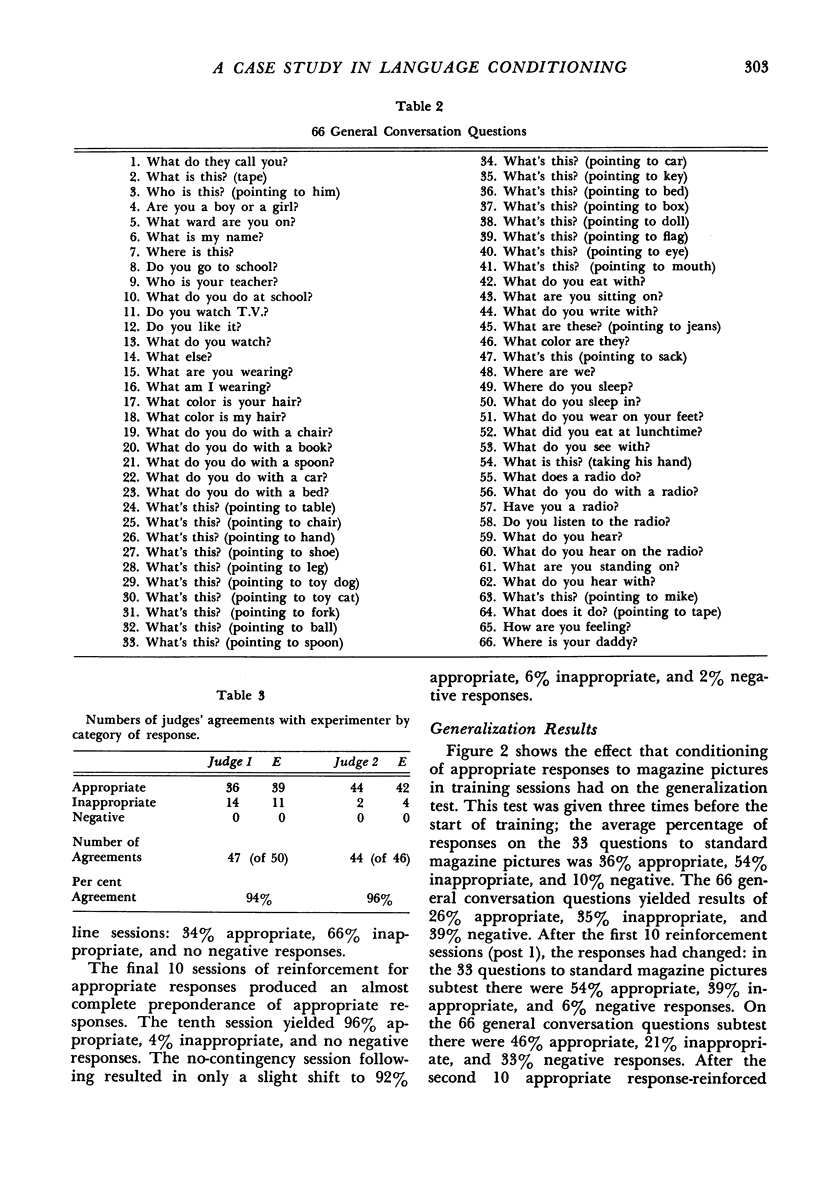
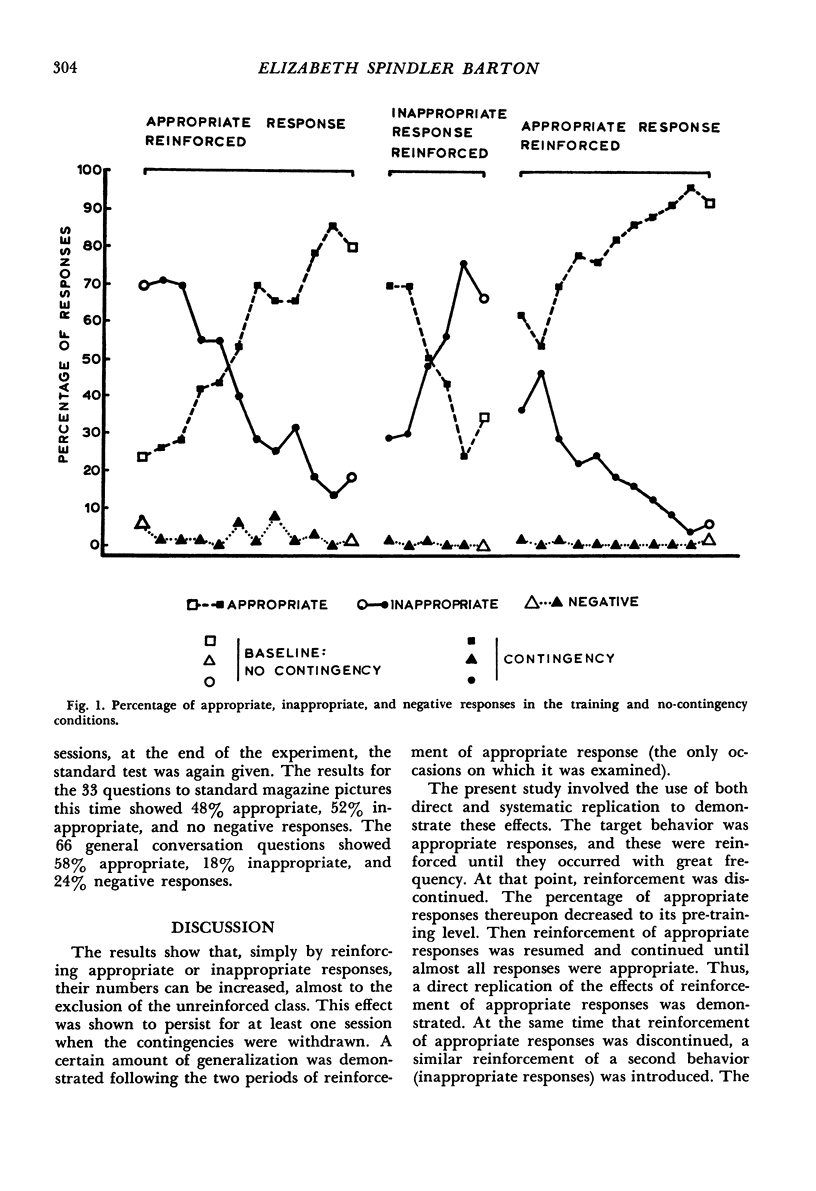
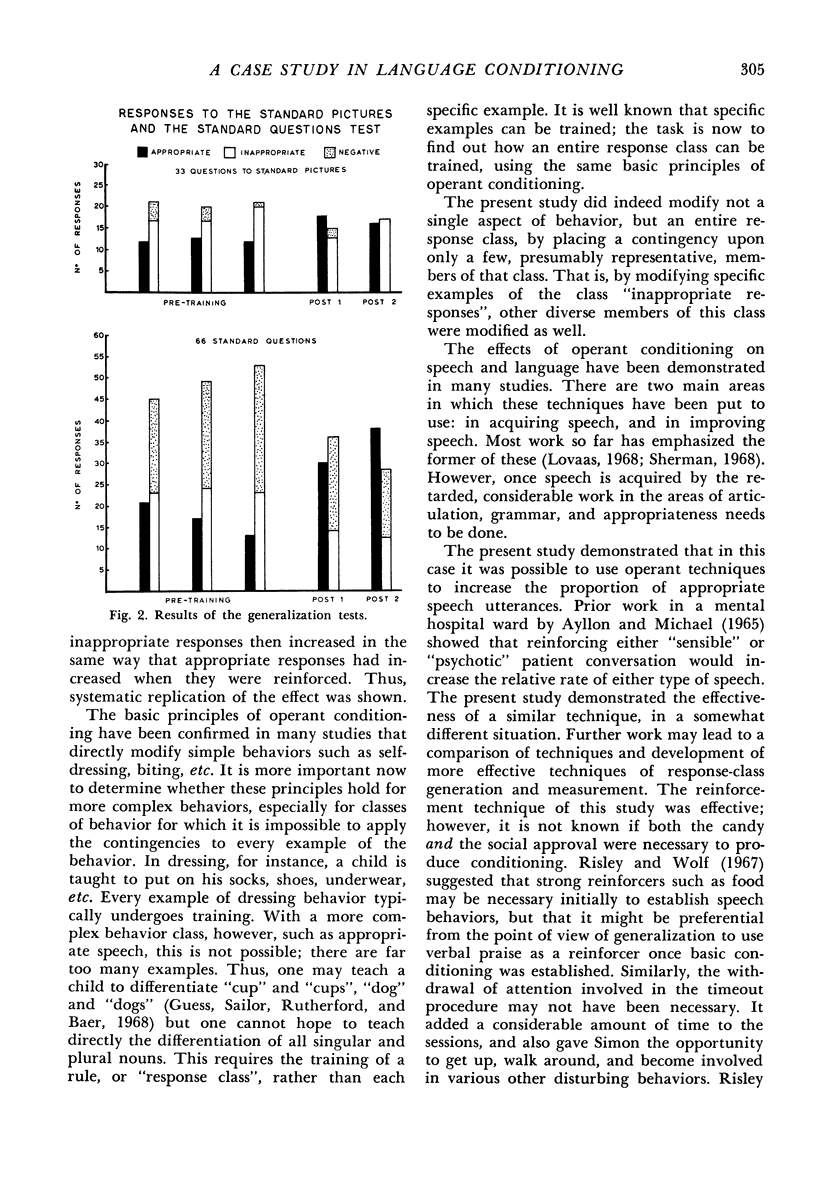
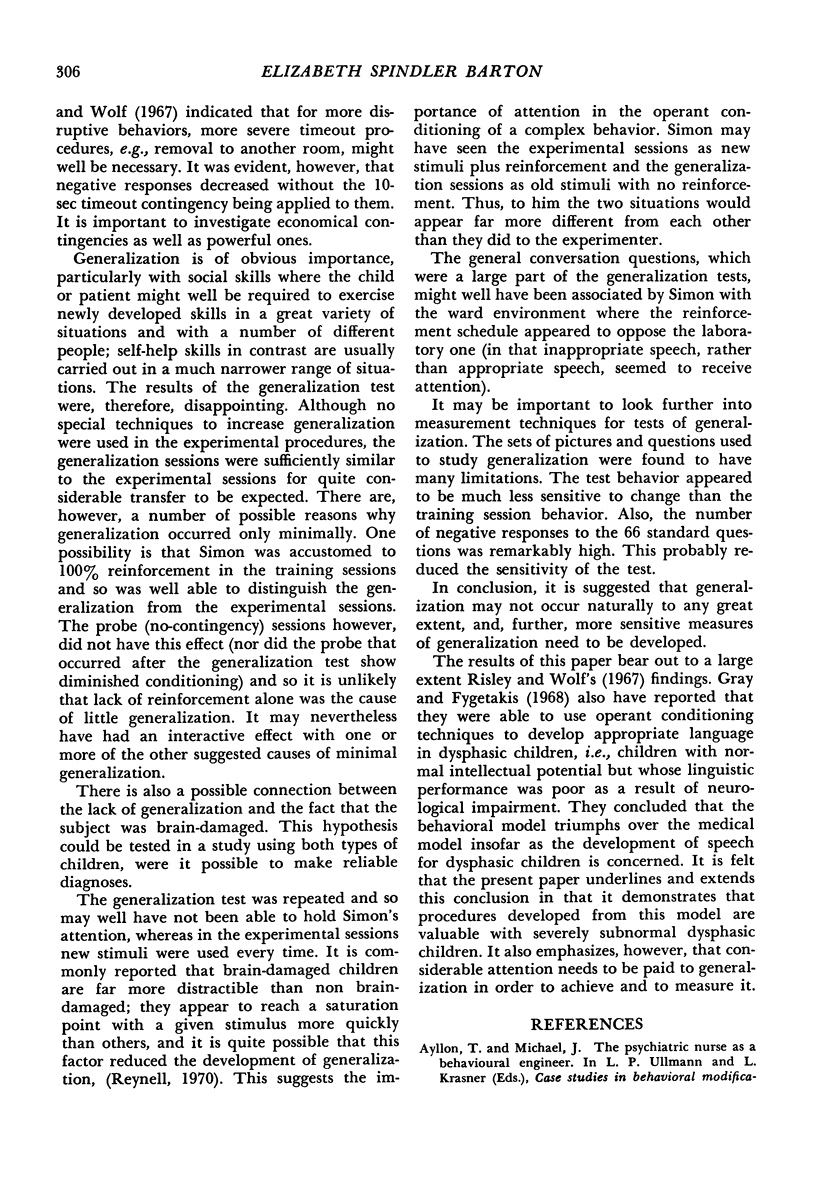
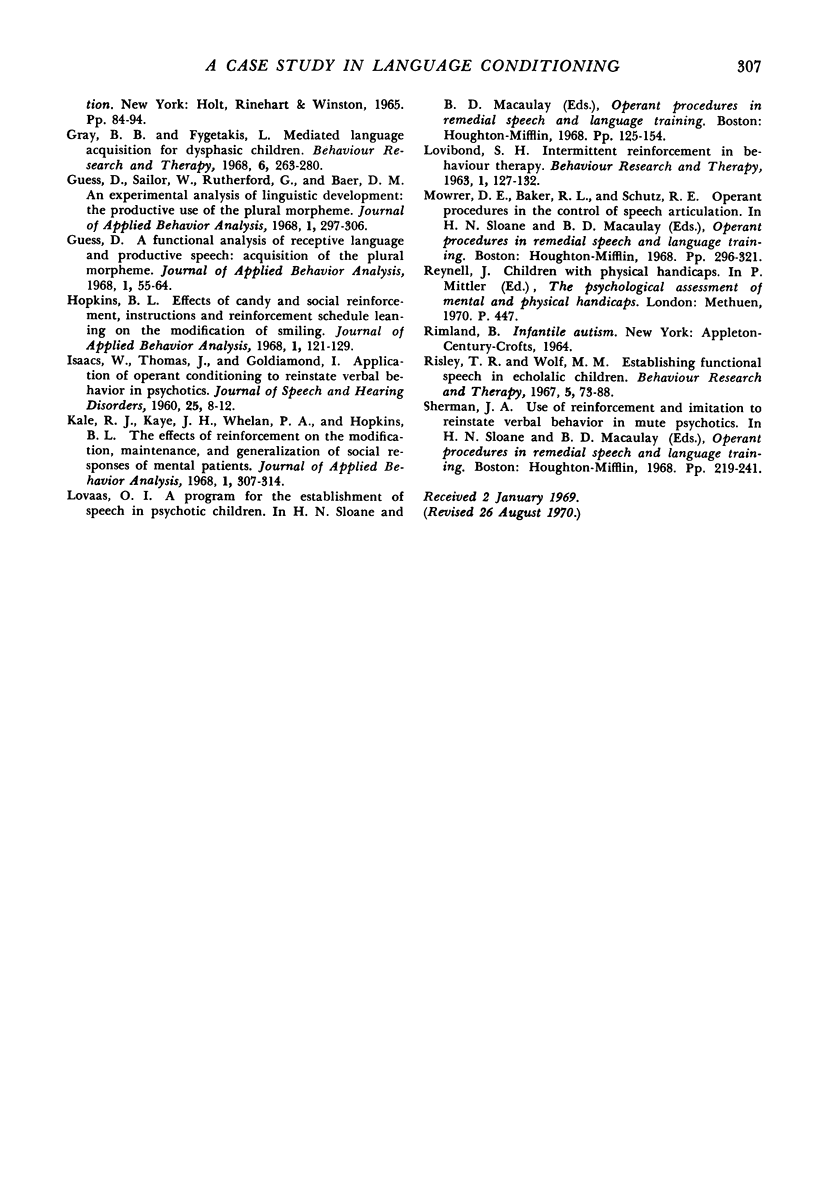
Selected References
These references are in PubMed. This may not be the complete list of references from this article.
- Bushell D., Wrobel P. A., Michaelis M. L. Applying "group" contingencies to the classroom study behavior of preschool children. J Appl Behav Anal. 1968 Spring;1(1):55–61. doi: 10.1901/jaba.1968.1-55. [DOI] [PMC free article] [PubMed] [Google Scholar]
- Gray B. B., Fygetakis L. Mediated language acquisition for dysphasic children. Behav Res Ther. 1968 Aug;6(3):263–280. doi: 10.1016/0005-7967(68)90061-2. [DOI] [PubMed] [Google Scholar]
- Guess D., Sailor W., Rutherford G., Baer D. M. An experimental analysis of linguistic development: the productive use of the plural morpheme. J Appl Behav Anal. 1968 Winter;1(4):297–306. doi: 10.1901/jaba.1968.1-297. [DOI] [PMC free article] [PubMed] [Google Scholar]
- Hopkins B. L. Effects of candy and social reinforcement, instructions, and reinforcement schedule leaning on the modification and maintenance of smiling. J Appl Behav Anal. 1968 Summer;1(2):121–129. doi: 10.1901/jaba.1968.1-121. [DOI] [PMC free article] [PubMed] [Google Scholar]
- ISAACS W., THOMAS J., GOLDIAMOND I. Application of operant conditioning to reinstate verbal behavior in psychotics. J Speech Hear Disord. 1960 Feb;25:8–12. doi: 10.1044/jshd.2501.08. [DOI] [PubMed] [Google Scholar]
- Kale R. J., Kaye J. H., Whelan P. A., Hopkins B. L. The effects of reinforcement on the modification, maintenance, and generalization of social responses of mental patients. J Appl Behav Anal. 1968 Winter;1(4):307–314. doi: 10.1901/jaba.1968.1-307. [DOI] [PMC free article] [PubMed] [Google Scholar]
- LOVIBOND S. H. INTERMITTENT REINFORCEMENT IN BEHAVIOR THERAPY. Behav Res Ther. 1963 Aug;1:127–132. doi: 10.1016/0005-7967(63)90015-9. [DOI] [PubMed] [Google Scholar]
- Risley T., Wolf M. Establishing functional speech in echolalic children. Behav Res Ther. 1967 May;5(2):73–88. doi: 10.1016/0005-7967(67)90001-0. [DOI] [PubMed] [Google Scholar]


